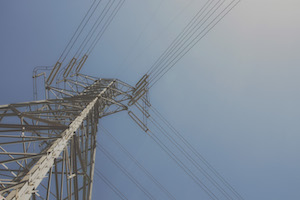Westinghouse to expand nuclear footprint in U.S.
The race to generate more energy in the United States is on and a Cranberry Township-based company is leading the pack.
At the first Pennsylvania Energy Summit and Expo in Pittsburgh on July 15, Westinghouse Electric Corp.’s interim CEO Dan Sumner announced the company plans to build 10 large nuclear reactors in the U.S. with construction to begin by 2030.
The company will use its AP1000 Pressurized Water Reactor design for the reactors, which can generate enough electricity to power more than 750,000 homes. The 10 reactors would drive $75 billion of economic value across the U.S. and $6 billion in Pennsylvania, according to Sumner.
“Westinghouse today is the world’s leader in nuclear technology,” Sumner said. “Over 50% of the reactors that operate in the world use Westinghouse technology. We as a company service over 60% of the world’s operating nuclear fleet right here from our headquarters in the Pittsburgh region.”
Sumner laid out the plan to President Donald Trump during the summit on energy and artificial intelligence at Carnegie Mellon University. Technology, energy and financial executives announced more than $90 billion of investment in data centers and power infrastructure at the conference, according to the office of U.S. Sen. Dave McCormick, R-Pa., who organized the event.
“As the nation’s second-largest energy producer and a global nuclear power leader, Pennsylvania is uniquely positioned to deliver the abundant, affordable energy that growing AI and advanced manufacturing sectors demand,” McCormick said. “We have the skilled workforce to build and operate this critical infrastructure, world-class universities driving innovation and strategic proximity to over half the country’s population.”
The U.S. has built just two new nuclear reactors during the past 30 years, both of which were Westinghouse AP1000s at Plant Vogtle in Waynesboro, Ga., a project that came in $18 billion over budget and seven years behind schedule.
Westinghouse announced a partnership with Google at the expo as well to use AI tools to make the construction of AP1000s an “efficient, repeatable process,” according to the company.
“This partnership with Westinghouse combines Google Cloud’s AI technologies and expertise with Westinghouse’s century-long expertise in nuclear innovation to chart a new path toward a smarter and safer future,” said Kyle Jessen, managing director, commercial industries for Google Cloud. “Artificial intelligence is not merely a tool; it can give companies a critical competitive advantage. Westinghouse is demonstrating what’s possible.”
Scott Burnell, a spokesman with the Nuclear Regulatory Commission, an independent agency by created Congress in 1974 to regulate commercial nuclear power plants and other uses of nuclear materials, said Westinghouse’s AP1000 design has already been approved by the commission, which will make it easier for Westinghouse and other companies to ask for permission to build and operate an AP1000 plant.
“The NRC has already decided the AP1000 generic design meets our safety requirements,” Burnell said. “But companies still have to submit applications addressing other aspects of building and operating a nuclear power plant.”
All nuclear plant projects within the United States must be approved by the NRC.
While Westinghouse is the designer and vendor of the AP1000 nuclear power plant, other companies have the ability to also use the design, with Georgia-based Southern Nuclear Company having two AP1000s currently in use, Burnell said.
“Other companies currently hold licenses to build AP1000s, they just haven’t used them yet,” Burnell said. “That has nothing to do with the announcement Westinghouse made. There is a company working under the name Fermi America that has submitted the first part of an application to build AP1000s in west Texas.”
To start construction, Westinghouse still needs to formally submit an application to the commission to build the AP1000s.
Burnell said one of the larger hurdles companies have to go through during the application process is they have to suggest locations for the plants and then make their case as to why the locations are safe.
“We look at a set of potential severe events that could impact a nuclear power plant,” Burnell said. “Severe weather and that stuff. If they say they want to build an AP1000, they have to demonstrate that the site they have picked presents no more than the kind of severe events that the design already accounts for. Hurricanes, tornadoes, severe flooding and others.”
Westinghouse has not announced locations for these AP1000s, but generally speaking, a nuclear power plant site will always need a large body of water to absorb excess heat the reactor generates, Burnell said.
After the NRC issues a license to build and operate a nuclear power plant, the commission will have inspectors on-site throughout the entire construction process. Once the plant begins running, another group of inspectors will still pay daily visits to the site.
“They can go onto the site at any time and look at any part of the operation,” Burnell said. “They have a number of procedures to inspect the operation of the plant to make sure it is meeting our requirements.”
After construction is complete, the inspectors will also conduct further inspections to make sure the operation meets the commission’s standards.
If standards are not met, the company could be fined by the NRC. Burnell said there have been instances where this occurred.
“There was a plant back toward the turn of the century where they had a serious case of corrosion in the cap that sits on top of the reactor,” Burnell said. “Eventually, once the NRC looked at the situation and examined anything that went wrong, they then issued a fine for several million dollars. That was a serious instance.”
The Westinghouse AP1000 Pressurized Water Reactor relies on natural forces such as gravity, air circulation and compressed gas for its safety systems, eliminating the need for operator intervention or active machinery in many accident scenarios, according to Westinghouse’s website.
The AP1000 plant has a 72-hour “coping period” following a station blackout, meaning that it cools itself down and remains safe for three days without any AC power or operator actions required.
Compared to other reactor designs, the AP1000 has a smaller footprint, which can translate to smaller land requirements and potentially lower construction costs.
In short, the AP1000 is designed to be safer, more efficient and more economical than previous generations of nuclear power plants, while also being more resistant to extreme events such as station blackouts.
Louis Christensen, an assistant professor of mechanical engineering at Slippery Rock University, said the nuclear industry has been getting a “face-lift” to restore the industry’s image as a safe energy source.
“When I was growing up 20 years ago when I’d think of nuclear energy, I thought of Three Mile Island and Chernobyl, where in reality those are freak accidents,” Christensen said. “Their safety record is stellar compared to every other energy source. Yes there have been bad scenarios in the past, but we have learned from them, and we have made it even safer than it was before.”
Nuclear power plants also produce fewer greenhouse gas emissions than their fossil fuel counterparts, Christensen said, as nuclear produces 50 grams of CO2 per kilowatt-hour of energy generated, where coal is about 1,000 grams.
“That 20-fold decrease in emissions doesn’t make it a perfect energy source when combating climate change, but it’s the best solution we have currently available with mature technology,” he said.
Christensen said he is excited about Westinghouse’s announcement to build 10 nuclear reactors in the United States, because of the country’s increasing demand for energy stemming from the increased construction of data centers for AI.
“There are currently about 400 power plants in the United States,” Christensen said. “Building those 10 reactors, you are essentially adding a significant increase into power generation. You can maybe phase out older plants that are less efficient. You can give yourself margins for energy demand changes.”
Christensen said with the current technology available, nuclear is not ready to replace fossil fuels because of the “unique demands of the power grid.”
“You need systems that can instantly come online to add energy to the grid,” he said. “That’s where gas-powered turbine engines are great.”
Nuclear waste is a concern for the industry, as it is required to be stored for long periods of time before it becomes safe again. But waste is not only a nuclear problem.
“Coal plants, for instance, have to deal with coal ash,” Christensen said. “It is laced with heavy metals and radioactive materials.”
Another way nuclear energy has a leg up on other fuel sources is its fuel size.
“The nuclear fuel pellets are about the size of your pinkie fingertip, and that tiny little pellet has the same amount of energy as 1,700 or 1,800 pounds of coal,” Christensen said.
Business Matters reached out to Westinghouse for this article and did not get a response.
This article will appear in the Sept. 1 edition of Butler County Business Matters. Read more about energy, land resources and agriculture by picking up a copy of the monthly publication or reading more online at butlerbusinessmatters.com.









